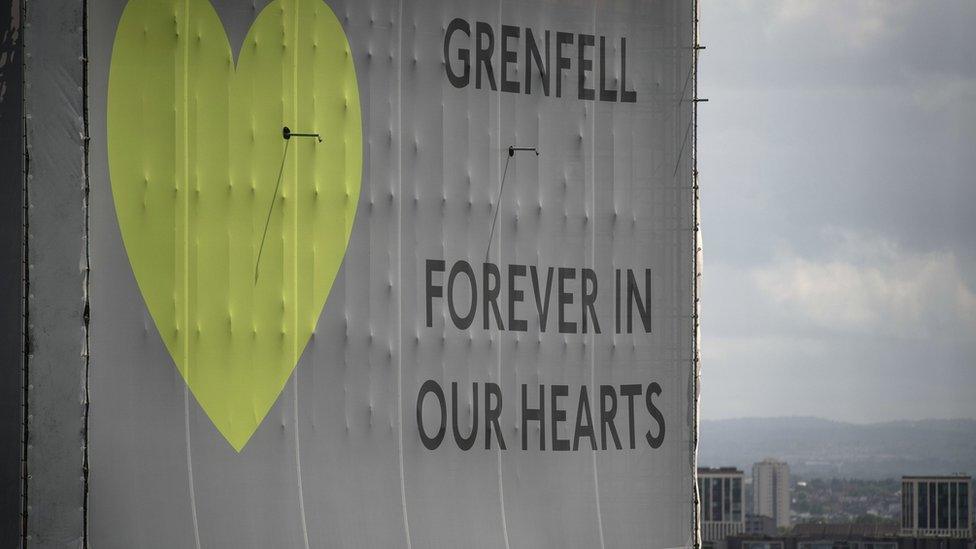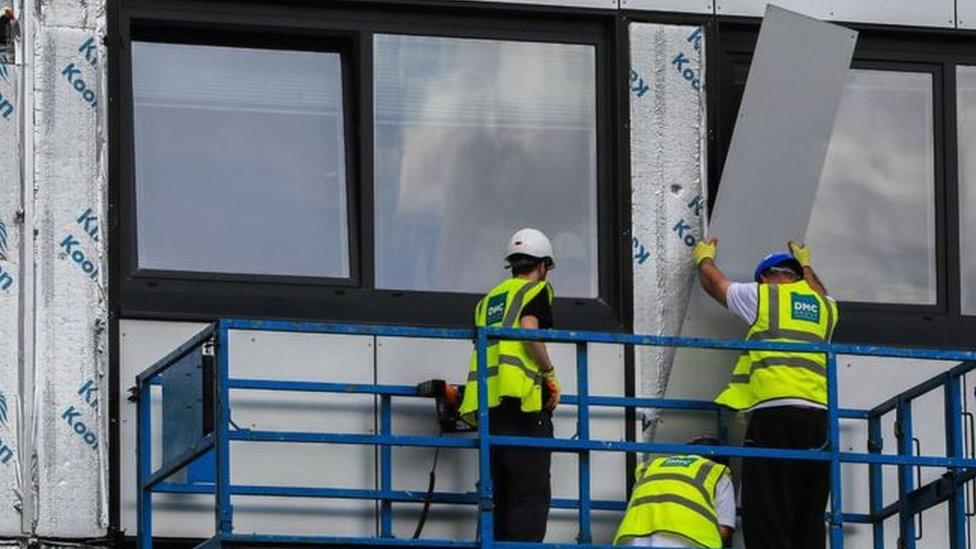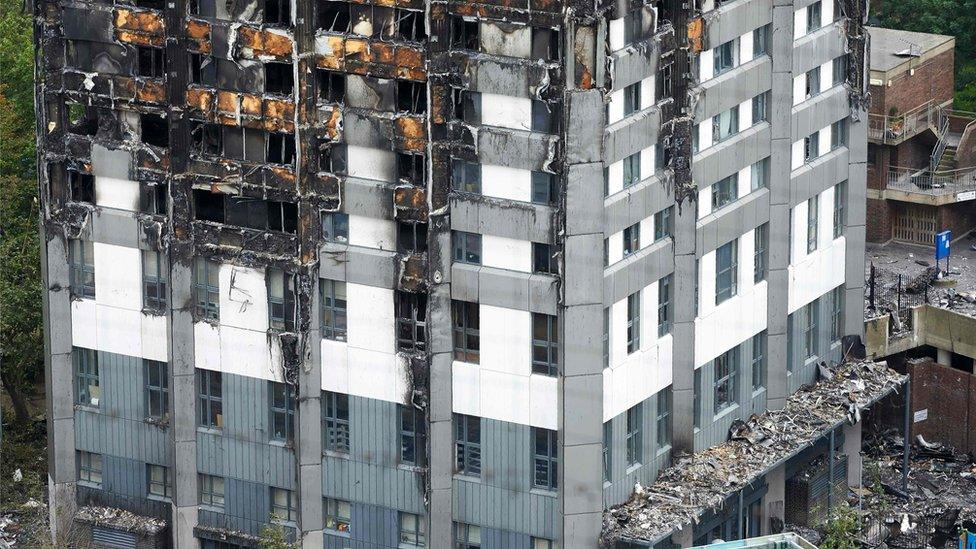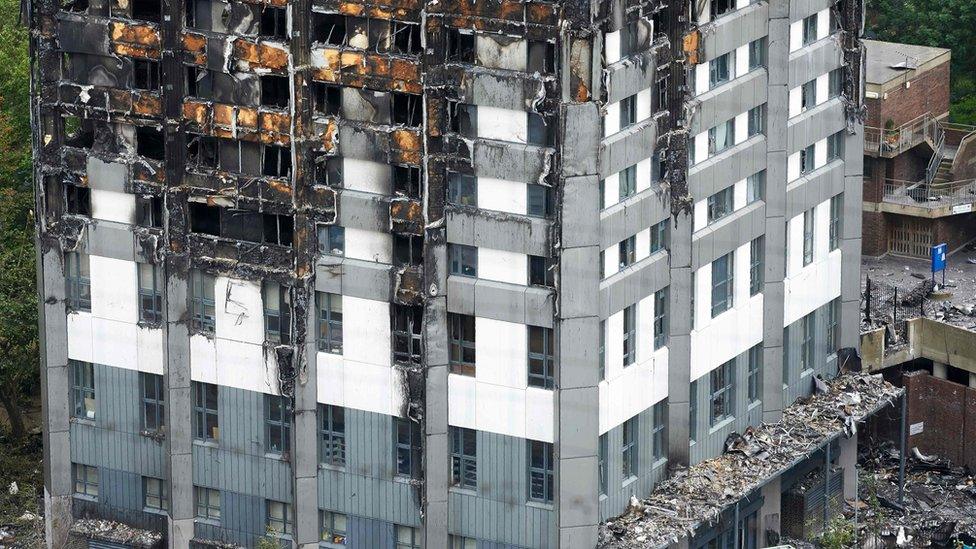Cladding tests 'almost certain to fail', experts say
- Published

Cladding has been widely used on high rises, including Grenfell Tower
Fire safety experts warn many of the 1,700 buildings identified as "at risk" in England are likely to fail new tests into cladding and building materials.
Hospitals, schools, nursing homes and tower blocks are among buildings which could be under threat, BBC 5 live Investigates has learned.
The government said it will monitor the test results this summer to decide if any immediate action needs to be taken.
It comes almost two years after 72 people died in the Grenfell Tower fire.
A public inquiry into the fire, which happened in west London in June 2017, heard evidence to support the theory that the highly combustible material in the cladding was the primary cause of the fire's spread.
It took minutes for the fire to race up the exterior of the building, and spread to all four sides.
The government has set up a fund to remove cladding from buildings identified with aluminium composite material (ACM) - the same type used on Grenfell Tower. The new tests, which began last month, are testing other types of cladding and building materials.

72 people died in the Grenfell Tower fire in 2017
One type of cladding, known as High Pressure Laminate (HPL) is believed to be of particular concern. The research group Building Research Establishment said that none of the cladding systems that had passed a standard BS 8414 safety test included an HPL.
Another study, released in the Journal of Hazardous Materials, found that HPL cladding materials released heat 25 times faster and released 115 times more heat than non-combustible products.
The government says that it recognises concerns about HPL and included them in the new fire safety tests.
Chartered engineer Dr Jonathan Evans was part of the team testing cladding for the government after the Grenfell Tower fire.
He said some of the tests were almost certain to fail and is calling for transparency around the results of the tests when they are released.

Cladding has been removed from numerous high-rise buildings following the Grenfell Tower fire
In December, the government introduced new fire safety regulations in response to Dame Judith Hackitt's independent review following the Grenfell Tower fire.
The regulations banned combustible materials from the external walls of new buildings over 59 feet tall.
There have since been calls from Clive Betts, the chairman of the Housing, Communities and Local Government Committee (HCLG), for these regulations to be applied to all new buildings, regardless of height.
He added that materials deemed too dangerous for new buildings should not be permitted for existing ones.
A spokesperson for the government's Ministry of Housing, which ordered the tests, said: "We issued an advice notice on non-ACM cladding systems, reiterating the clearest way to ensure fire safety is to remove unsafe materials."
To find out more listen to 5 Live Investigates on Sunday at 11:00 GMT or afterwards on BBC Sounds.
- Published21 May 2018

- Published28 March 2019

- Published6 July 2018